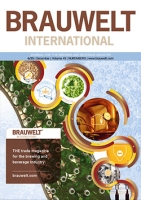Processes in the beverage industry place unique demands on conveyor systems and their drives, where all of the movement and the various speeds are determined by the filling process. As breweries update their equipment, many are turning to SEW-Eurodrive for energy-efficient mechatronic drives with a focus on hygienic design.
Industry 4.0 and the Smart Factory address major challenges – the securing of competitiveness, resources and energy efficiency, the quick change of sales markets and ever-stronger individualization. The introduction of cyber-physical systems as well as flexible and intelligent software solutions is necessary to create completely networked, self-organizing production systems and thus secure the sustainability of industrial manufacturing.
Paulaner is currently building a completely new, state-of-the-art brewery in Munich-Langwied. The existing equipment at the site in Munich-Au is slated to be sold. Since the brewery at the new location is gradually being commissioned, the equipment at the Munich-Au site is slowly being decommissioned, and for a time, production will occur at both locations. This presents quite a challenge, but it is one that can be overcome by creating a timetable and a sequential plan for optimizing the removal of the equipment.
In the brewing industry, the demand for consistent beer characteristics and taste all the time, despite variations in the quality of the raw materials, extends all the way through to the automation system: The new Version 7 of a renowned brewery process control system offers the same level of continuity, which fits seamlessly into the 35-year history of this system.
With almost 2800 craft breweries operating in 2013, up 15 percent over 2012, and perhaps 1700 more in various stages of planning, you’d have to be a real old miser to warn that this kind of growth cannot be sustainable. When Kim Jordan, the owner of New Belgium Brewery, predicted back in 2003 that craft beer will eventually garner 10 percent of the market – it had 3 percent then – Bob Weinberg, the eminent beer industry sage, retorted: “Not possible”. He obviously got it wrong.
The requirements set out by Carlsberg for migration to a new process control system were clear and deliverable. The brief for the new automation solution at the Danish brewery in Fredericia was quite simple: make the complex production processes more transparent and safer, considerably improve user-friendliness and, naturally, implement it as quickly as possible – with a minimum amount of production downtime.
When you’re on a roll you might as well roll, because it’s not going to last forever. You certainly don’t stop and take a picture. What a banal truism if ever there was one. But it captures well what’s happening in the U.S. right now. Ever since the controversial debate over “craft versus crafty” beers was kicked off last December, there has been a lot of beard-scratching and soul-searching by industry pundits, cranks and smarty pants over concerns that eventually the segment’s growth will reach the glass ceiling. The jury is still out if, or when, this will happen. Meanwhile, an always confident Charlie Papazian anticipates that by 2017 craft beers will have a 10 percent market share and at this point the momentum will take them past that.
The main objective of the marketing departments of all companies is to increase sales and acquire market shares. Breweries are no exception to the rule. Acquiring market shares most often happens through launching new brands aiming to attract new customers who did not find existing brands appealing. It is not always easy to manage the development and launch of new beers. Indeed, the production of a new beer may involve the use of different raw materials, a change in the brewing temperature diagram, different kinds of yeast or a different fermentation diagram. Managing all of these parameters can turn into a nightmare for the brewer and cause a halt in the development of new beers.
For decades, the German beverage industry has been seriously affected by the stagnating demand for beverages, by over-capacities and by the resulting crowding-out and price competition. This situation requires integrated and complex strategies for handling both market and company, the objective being to create a clear profile for the enterprise. Such objectives should take into account the following factors: competitors and off-trade companies as key market drivers, the consumer target group and sales intermediaries as brand-relevant factors and lastly, internal and external resources as essential features for the creation and further development of a sustainable competitive advantage.


